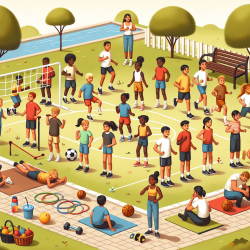Understanding the Impact of Gender-Inclusive Physical Activity Interventions
As practitioners dedicated to enhancing children's outcomes, it's crucial to leverage data-driven insights to inform our approaches. A recent systematic review titled "A sex/gender perspective on interventions to promote children’s and adolescents’ overall physical activity: results from genEffects systematic review" sheds light on how gender considerations can influence the effectiveness of physical activity (PA) interventions for children and adolescents.
Key Findings from the Review
The review analyzed 94 studies with 164 outcomes, focusing on interventions aimed at increasing overall PA among children and adolescents. A significant finding was that 35% of the PA outcomes showed significant improvements in PA levels, with similar effects for both boys and girls in 105 out of 120 outcomes.
However, the review highlighted a critical gap: the low consideration of sex/gender aspects in intervention studies. Only a third of the outcomes showed improvements, indicating that many interventions failed to increase overall PA effectively. This underscores the importance of incorporating gender-sensitive approaches in designing and implementing interventions.
Implications for Practitioners
To improve the effectiveness of PA interventions, practitioners should consider the following strategies:
- Gender-Sensitive Measurement Tools: Use measurement instruments that account for sex/gender differences, such as stride length or walking speed, to ensure accurate PA assessment.
- Participant Flow Considerations: Report and analyze participant flow data disaggregated by sex/gender to identify potential biases and ensure equitable participation.
- Inclusive Intervention Content: Develop intervention content that addresses the specific interests and needs of both boys and girls, ensuring that materials are engaging and relevant to all participants.
Encouraging Further Research
While the review provides valuable insights, it also highlights the need for further research to explore the effectiveness of targeted versus non-targeted interventions and the role of gender diversity in PA interventions. Practitioners are encouraged to contribute to this research by applying the newly developed sex/gender checklist during the development, implementation, and evaluation of PA programs.
Conclusion
The findings from this review are crucial for health promoters, researchers, and policymakers aiming to promote PA while fostering gender equity. By incorporating gender-sensitive approaches, we can enhance the effectiveness of interventions and contribute to reducing the gender gap in overall PA levels among children and adolescents.
To read the original research paper, please follow this link: A sex/gender perspective on interventions to promote children’s and adolescents’ overall physical activity: results from genEffects systematic review.










